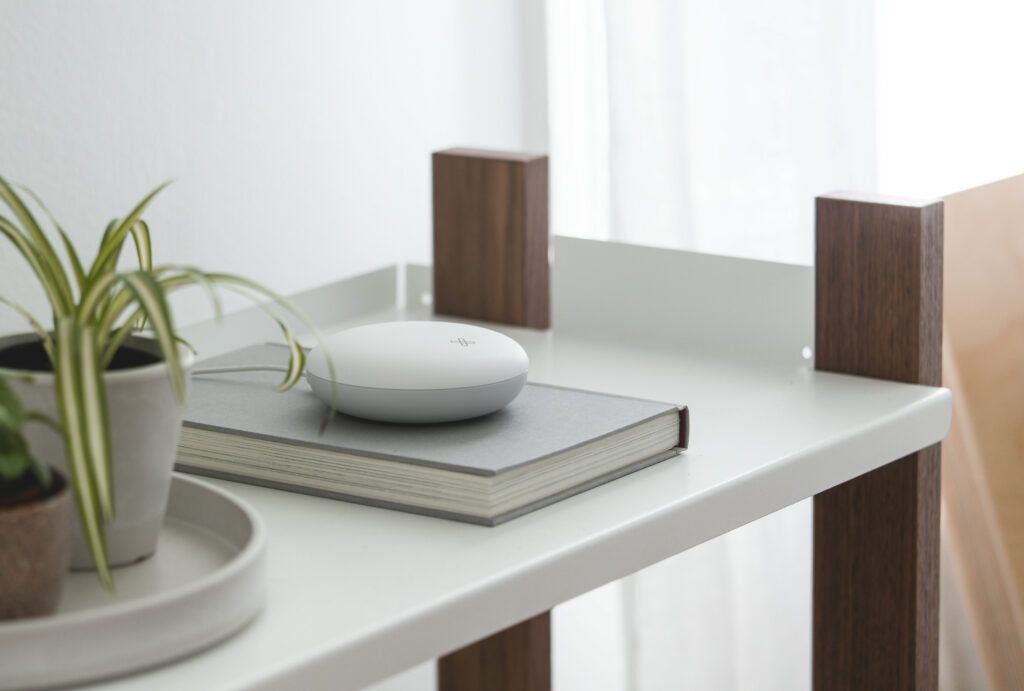The desire to protect our homes and those we love has remained constant for decades. The means by which we do that, however, have changed drastically. Home security systems can be traced all the way back to 390 B.C., when geese served as an alarm against intruders. Modern home security was born when video technology became more widely accessible in the late 1960s. Since then, the industry has transformed, grown, changed, and improved.
Analysts predict that the global market for home security systems will be worth over $75 billion by 2023. The latest DIY Home Security system utilizes cutting-edge WiFi wave-based technology that redefines the ways in which we can protect ourselves while preserving our privacy. To fully understand how far the industry has come, and appreciate the feat of technological evolution, we need to examine the roots of DIY home security.
The Origins
Ancient security systems came in the form of moats, drawbridges, guard dogs, and strategically placed mirrors. The first burglar alarm, invented in 1853 by Augustus Pope, used electromagnets to ring a bell with a hammer when a door or window opened. It wasn’t until 1918, after World War I ended that consumer demand for home security systems truly took off. Those who couldn’t afford alarms hired door shakers – a group of watchmen who came to subscribers’ houses at night and shook their doors to make sure they were locked.

Video Surveillance
Video surveillance technology was invented in the 1940s, but it took nearly 30 years before it was used for home security. In 1969, African-American inventor Marie Van Brittain Brown patented a video-based home security system. By the 1980s, home security systems became less expensive and much more common. Most security companies lowered their upfront installation fees in order to collect monthly monitoring fees.
Up until the 1990s, home security and alarm systems were hardwired, which came with notable disadvantages: they were difficult to install, upgrade, and move, and since they relied on physical phone lines and connections, criminals could all too easily cut the lines to stop signals and sensors.
The DIY Revolution in the Digital Age
When WiFi entered the consumer market in 1997, it revolutionized the home security industry. Cameras could transmit video streams wirelessly to monitoring centers, computers, and mobile devices. It eliminated the issues with hardwiring, making installation exceedingly easier and overall costs tremendously lower.
Throughout the 2000s, more services were introduced that allowed users to monitor their home remotely. With the overall equipment needs greatly reduced and simplified, security companies began to sell the equipment on its own, allowing users to forgo professional installation and set up their wireless sensor-based security systems themselves. This led to a shift in the industry towards a DIY approach, a shift that homeowners everywhere have fully embraced.
The release of wireless sensors that could communicate via Bluetooth led to the rise of smart home devices that could be fully controlled and programmed through an app on your phone. Home security companies are filling the smart home device market with simple, user-friendly, easy-to-set-up smart security systems. Most of the emerging DIY home security companies though are not introducing new, revolutionary technology, but rather making old technology that has been used for decades (I.e., motion sensors, contact sensors, keypads) sleeker and better to look at. In addition, many of these companies rely on cameras for security monitoring, but since all the devices are connected to the internet, some cameras have been hacked, leading to growing privacy concerns.

The Future: Harnessing WiFi Waves
Origin Wireless, through its Hex Home smart security system, offers a highly effective alternative to cameras. The patented, innovative technology is redefining what home security means, offering a never-before-seen way to secure your home. Unlike other DIY home security systems on the market, Hex Home steps away from traditional, analog, outdated solutions.
The small, unobtrusive devices use WiFi Sensing technology that accurately detects movements by monitoring WiFi waves in the home. Because it doesn’t rely on cameras or traditional sensors, the Hex Home system can see around corners and through walls, covering more square footage than their counterparts with nearly zero blind spots. The adjustable sensitivity settings can account for house pets, meaning no more false alarms, only extremely accurate home security. The system can easily be set up in minutes and controlled through an intuitive app.
Centuries of technological advancement have led the home security industry to where it is today. Hex Home’s invaluable reimagining of home security is leading the industry into a new generation of smart home security devices that shake off the limitations of these archaic solutions. We guarantee that industry innovation will not stop as long as there are homes and loved ones to protect.
To learn more about the applications of WiFi Sensing for Home and Health, be sure to check back in for our next blog!

